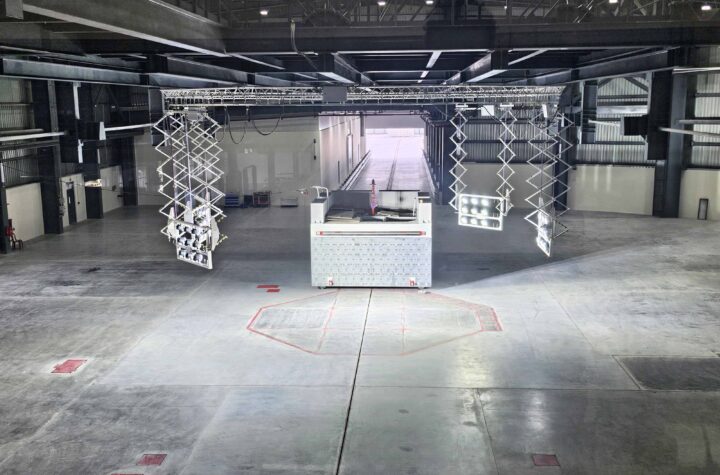
Russia’s automotive industry was given a significant boost in February this year with the launch of the production of the Chevrolet Aveo at the Gorky Automobile Plant, (GAZ) plant. Situated in Nizhny Novgorod, Russia, the plant is the second largest in Europe and is owned by the Russian diversified conglomerate Basic Element. GAZ has strategic partnerships with various auto manufacturers including General Motors, Volkswagen and Daimler. Total investments in joint projects are about half a billion Euros.
Automotive Industries asked Bo Inge Andersson, President and CEO of GAZ Group and what makes Russia a good option for automotive OEMs.
Andersson: Analysts expect that Russia will eventually become the largest car market in Europe. In addition to the market, the driving factors for OEMs include expansion opportunities and a predictable business environment. This is supported by Russia’s accession to the World Trade Organization (WTO) and measures taken by the Russian Government to encourage localization of foreign-brand vehicles in Russia.
AI: Are you focusing on the domestic market or export markets?
Andersson: Our main sales markets include Russia and the Commonwealth of Independent States (CIS). Our share in the commercial vehicles market in Russia is about 50% and about 45% in the Ukraine and Belarus. We export about 13% of our LCVs to the CIS and elsewhere, and we have plans for export expansion.
AI: What about manufacturing outside of Russia?
Andersson: Last year we opened a LCV facility in Turkey. It is the first production facility of Russian light commercial vehicles outside the CIS and developing countries. By the end of 2013 we plan to open 16 dealerships (one in each region of Turkey) and 32 service stations (in all cities where over 500,000 people live). Our operations in Turkey will serve as a basis for export expansion into the neighboring countries.
AI: How does GAZ avoid conflict of interest when producing vehicles for competing OEMs?
Andersson: These vehicles belong to different product segments: light commercial vehicles for Daimler and passenger cars for General Motors and Volkswagen. Production of cars for Volkswagen and GM is set up in different facilities. There are also two separate teams, including managers and production workers. Training is also organized differently
AI: What about auto components?
Andersson: Historically Russian automotive companies were vertically integrated with all components produced in-house. Three years ago EE divided our automotive components business into three segments depending on our competences and business significance. Our strongest competences axles, suspension modules and stampings are used mainly for in-house needs. We also produce iron castings, forgings, wheels, exhaust systems, springs and tooling. We are strong here, but do not rule out the possibility of developing this segment with partners. Our third segment is one which we are prepared to sell. It is only about 10% of the total automotive component business revenue and includes production of clutches, braking and fuel systems. As for the scale of our whole automotive component business, it’s about 4% of the group’s total revenue.
AI: What are you concentrating on the GAZelle?
Andersson: We made a decision to move away from passenger cars into the commercial segments in the crisis period of 2008- 2009 when our Volga Siber project turned out to be lossmaking. We now hold about 50% in the light commercial vehicle segment, 58% in the medium-duty trucks segment and 65% in the bus segment.
AI: Tell us a little about the GAZelle- BUSINESS model.
Andersson: When I came to GAZ in 2009 my main task was to recover the company from crisis. One of the measures we took was to upgrade our core product – the GAZelle light commercial vehicle. We asked our customers what they wanted, and upgraded the vehicle to meet their needs. Thanks to streamlined production and a new quality system the vehicle had only a slight increase in cost – about US$800. We expected we would sell 60% of the new GAZelle and 40% of the old one. In the end, the new GAZelle fully replace the old model.
AI: How do you compete with lower cost manufacturing destinations?
Andersson: GAZelle is the most affordable commercial vehicle in Russia. What is more important is our developed service network. The same goes for spare parts. We have the most developed service network (about 250 stations) and the most developed network of spare parts shops (about 1,200 outlets) in Russia. Moreover, we offer a wide range of specialty vehicles on the GAZelle platform: box vans and refrigerator vans, dump trucks, tow trucks, fuel and food tanks, hydraulic hoists, firefighting vehicles, school buses and ambulances.









More Stories
Sonatus – The industry is shifting gears to software
Cybord warns of dangers of the stability illusion
HERE building trust in ADAS systems